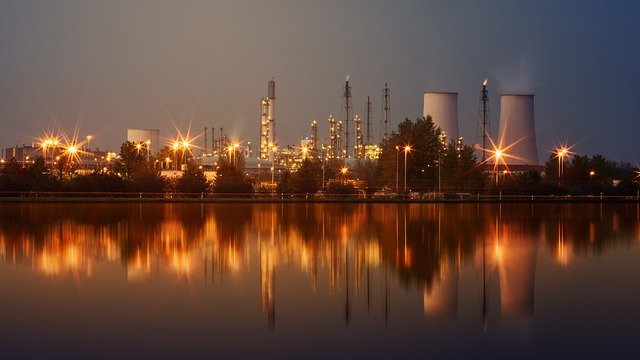Is Natural Gas Renewable or Nonrenewable?
Is natural gas renewable or nonrenewable? This can be confusing to a lot of people, especially to those who think natural gas has the same properties as landfill gas. Well, natural gas is a non-renewable source of energy. It’s supply can be replenished naturally and once it has been utilized it gets depleted. It takes thousands and sometimes millions of years to replenish such type of energy.
Is Natural Gas a Renewable Resource: Conflicting Overview
There are those who classify natural gas as a renewable and nonrenewable source of energy. The truth is that traditional natural gas found underneath the earth’s surface is a non-renewable source of energy and it takes millions of years for it to be replenished.
However, there is renewable natural gas that’s created through human practices. It’s a gaseous byproduct of the decomposition of organic matter i.e., a plant-based material, food waste, and other garden clippings. This type of energy is considered renewable because it mostly comes from organic sources and it’s easy to generate. However, it doesn’t fit the profile of traditional natural energy.
How is Natural Gas Formed and What Makes it Nonrenewable?
The formation of natural gas is through decaying organic matter that has undergone decomposition after being buried for thousands or millions of years. The current sources of natural gas are estimated to have been buried more than 300 million years ago when the remains of animals and sea plants sank to the bottom of oceans and were buried by rock sediments.
The sedimentary rock formations on top of the organic matter became thick over the years, accumulating intense pressure and heat on top of the energy-rich animal and plant matter. The combination of pressure and heat eventually forced the organic matter into natural gas and petroleum. However, natural gas, just like petroleum, remained trapped in the solid rock layers.
That’s why the extraction process includes dropping heavy weights, exploding, and drilling into the hard underground rock layers. The two types of non-renewable natural gas sources are:
- Abiogenic methane: it’s found within hydrogen-rich rock deposits.
- Thermogenic methane: found within sedimentary basins and formed due to elevated temperatures in addition to pressure.
Note: Biogenic methane is the third type of natural gas but it’s renewable in nature.
Is Natural Gas Liquid or Gas?
It’s a mixture of gases with high amounts of hydrocarbons. These gases are naturally found in the atmosphere and they include carbon dioxide, nitrogen, and methane.
How Long Will Natural Gas Last?
With the increase in energy consumption over the past decades, it’s estimated that the current reserves of natural gas can last 53 years if we continue utilizing it at the current rates. A large portion of this energy goes to the processing of paper, metals, plastic products, food processing, and petroleum refining. If this energy was to last for a century, then we need to change the way we utilize it.
There is still a considerable amount of natural gas reservoir under the earth’s surface. But only some amount can be extracted based on our current knowledge and technological tools. This means that even though the reserves can have more energy, it might not be possible for us to continue with the extraction process in the incoming years.
Uses of Natural Gas
From the early 19th century, natural gas has had many uses from powering lights in buildings to facilitating modern technology. Uses of natural gas include:
Generation of electricity
This is the primary use of natural gas. More than 25% of electricity comes from this non-renewable source of energy and the capacity is expected to reach almost 45% before 2040. With the popularity of electric cars increasing, there is no doubt that this will be one of the major sources of electricity.
Heating
In the US alone, almost half of the homes rely on this non-renewable energy for heating. Well, the reason behind this is that natural gas is more effective when it comes to electric heating than using heating pumps.
Generally, the installed forced-air systems will release heat from natural gas at temperatures ranging between 50 and 60 degrees Celsius. However, heating from electric pumps is usually delivered at temperatures between 30 and 35 degrees Celsius. This is almost half the heating levels of natural gas.
While the heat from an electric heat pump is effective in warming up homes, the amount of heat is much lower due to the fact that the average human temperature ranges between 36 and 37 degrees Celsius. Higher heating temperatures aside, natural gas is more cost-effective.
Note: Both heating and electrical energy can be simultaneously used through a technological process known as cogeneration. This simply means a combination of heat and power. In some industries, this can be used in the form of trigeneration i.e., the combinational use of electricity, cooling, and heating. Cogeneration and Trigeneration have a high energy use efficiency of up to 80%.
Industrial Use

In an industrial setting, natural gas is used for transportation and production. This non-renewable energy is used in production industries to manufacture hydrogen, fertilizers, and chemicals. On the other hand, it’s the main source of energy in the transport industry i.e., petroleum. In fact, many people don’t know that natural gas is used in transportation more than electricity
Benefits of Using Natural Gas
This is one of the cleanest sources of efficient fuel. Using it domestically and industrially comes with lots of benefits and helps to harness energy security. It’s versatility and effectiveness make it one of the most ideal partners in modern times where energy use is critical. Benefits of natural gas include:
Supporting innovation
If effectively sourced and use, then this gas can play a crucial in supporting innovation. Of course, companies and households are trying to invest in renewable energy sources. But there is climate change that has had devastating effects. what if the sun doesn’t just shine as it used to be or the wind doesn’t blow?
Well, using natural gas is definitely an effective backup that can sustain our reliance on renewable energy sources. Besides that, current innovation methods are also trying to make natural gas more accessible. Companies are employing advanced grilling technologies in order to unlock more natural gas sources. In addition to that, this source of energy can be liquefied and stored at ultra-low temperature ranges for future use.
Environmentally-Friendly
Unlike most non-renewable sources of energy, natural gas is a cleaner source of burning fuel. Reports by the International Energy Agency indicate that gas-based power plants usually emit 45%-55% lower toxic gases compared to coal-based power plants.
If natural gas can be used industrially to generate electricity, then it can help to significantly reduce the emission of greenhouse gas that’s majorly produced by coal-based power plants. Furthermore, burnt natural gas doesn’t release toxic particulate matter into the environment that would otherwise contribute to smog at the ground level.
Economic Contribution
This source of energy contributes to economical growth in many ways. It directly contributes to the creation of job opportunities ranging from those who produce, deliver, and use it for their businesses.
Downsides of Using Natural Gas
While this energy may be a cleaner and safer source compared to fossil fuels, natural gas still comes with its dangers. One of the most serious downsides is the high potential for explosion. That’s why it’s rarely transported using common utilities of transport other than pipelines. This makes it difficult to distribute it economically.
Exploration of new extraction sites, as well as the drilling process done with the aim of creating work sites, has a serious negative impact on the environment. It causes noise pollution, water pollution, air pollution, and the destruction of habitats.
Is Renewable Natural Gas the Future?
“Is natural gas a renewable energy?” Well, times are changing and probably renewable natural gas might be the future. Renewable natural gas, also known as biogenic methane has been touted as a great sustainable substitute to natural gas. Its also extracted within the earth and can be processed as its traditional counterpart.
So, is it the future of natural gas? The fact that renewable natural gas can be extracted and utilized using the same resources as traditional natural gas makes it a viable solution. If companies can harness the biogenic methane that comes off from cow dung, landfills, and organic waste, then there will be less methane accumulating into the atmosphere. This will help to protect the ozone layer and also reduce the effects of global warming. However, this will also encourage the production of methane gas that’s harmful to the environment.
Is Natural Gas Renewable or Nonrenewable: Conclusion
Natural gas is a nonrenewable source of energy. It takes millions or even billions of years of the buried organic matter to form this type of energy. The geological process makes it difficult for it to be classified as a renewable source of energy since the rate of its utilization is faster than the process of its formation. More information can be found here.
However, humans are trying to find an alternative source of similar energy by producing renewable natural gas. However, this isn’t an effective energy source since it involves the use of methane gas that’s harmful with dangerous side effects.
Recent Posts
Understanding Energy and Electricity: The Power For Progress
Energy and Electricity Energy and electricity are integral components of modern life, powering everything from homes and businesses to transportation and communication. Without them, the...
The Future of Wind Energy The future of wind energy is set to play a critical role in addressing global energy needs while combating climate change. As renewable energy sources like wind and...


